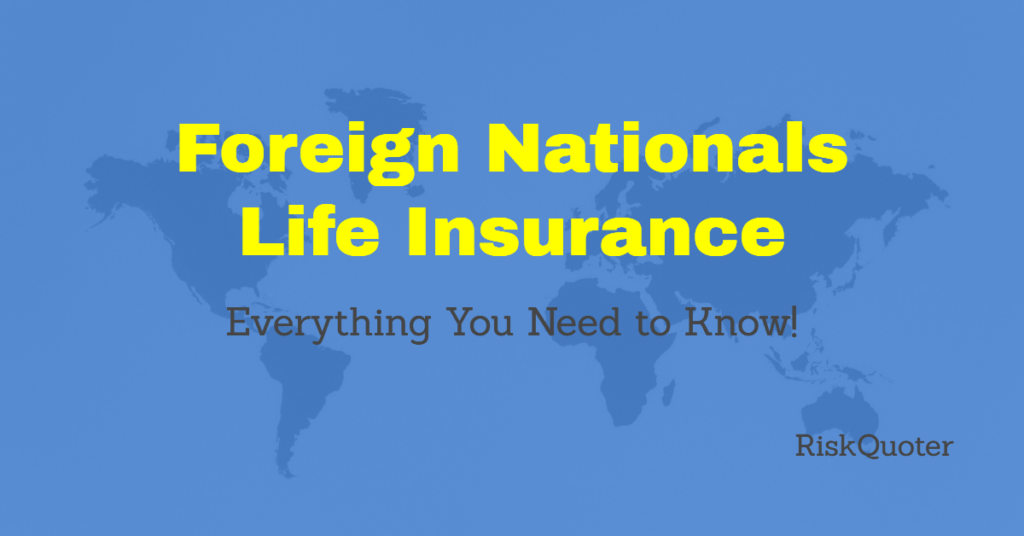Comprehensive Guide: Aviation Enthusiast Coverage, Non – US Citizen Life Insurance, and Indexed Universal Life Projections
Looking for the best aviation enthusiast coverage, non – US citizen life insurance, or indexed universal life projections? A SEMrush 2023 Study reveals a booming aviation insurance market, while the Migration Policy Institute notes over 44.9 million non – US citizens in the US in 2021. LIMRA shows a 20% sales increase in indexed universal life (IUL) policies. Our buying guide compares premium vs counterfeit models and offers a free installation included and best price guarantee. With these US authority sources, find the ideal policy now!
Aviation Enthusiast Coverage Solutions
The demand for aviation insurance has skyrocketed with the increase in air traffic and rapid technological advancements in the industry. A SEMrush 2023 Study shows that the global aviation insurance market is expected to grow at a CAGR of 5% from 2023 to 2028, highlighting the sector’s significance.
Types of coverage
Liability coverage

Liability coverage is a cornerstone of aviation insurance. In the event of an accident, like the American Airlines flight collision with a military helicopter in January 2025, liability claims can be substantial. This type of coverage protects aircraft owners and operators from financial losses due to damage or injury caused to third parties. For example, if an aircraft accidentally damages a hangar or injures a bystander on the ground, liability coverage will take care of the associated costs.
Pro Tip: Always review the limits of your liability coverage. Make sure it is sufficient to cover potential claims, especially if you operate in high – traffic areas or carry valuable passengers.
Short – term policies
Short – term policies are ideal for occasional flyers or those who use their aircraft seasonally. These policies offer flexibility as they can be tailored to specific needs and time frames. For instance, a pilot who only flies during the summer months can purchase a short – term policy for that period. This way, they are not paying for year – round coverage when they don’t need it.
Pro Tip: When purchasing a short – term policy, read the fine print carefully. Some policies may have restrictions on when and where you can fly.
Insurance providers
There are several insurance providers in the aviation market. AssuredPartners Aerospace, AOPA’s partner for Aircraft Insurance, is one of the nation’s largest aviation insurance firms. They offer the absolute best insurance protection to fit the needs of aviation enthusiasts. Another option is companies that offer standard aviation all – risks hull and liability covers, along with aviation – related risk assessment and consulting for passenger airlines, cargo airlines, and manufacturers.
| Insurance Provider | Type of Coverage Offered | Special Features |
|---|---|---|
| AssuredPartners Aerospace | Comprehensive aircraft insurance | AOPA partnership, personalized service |
| [Other Company Name] | All – risks hull and liability | Risk assessment and consulting |
Cost differences
The cost of aviation insurance varies significantly depending on the type of coverage, the aircraft, and the pilot’s experience. Liability coverage may be relatively affordable for smaller, less – risky aircraft, while short – term policies can be more cost – effective for occasional flyers. However, policies with higher coverage limits or for high – value aircraft will naturally come with a higher price tag.
Factors determining cost
The cost of aviation insurance, like all insurance, is driven by risk factors. The higher your risk of being involved in an incident, the higher your insurance premium will be. Key factors include the aircraft’s age, make, and model, the pilot’s flying experience and safety record, and the frequency and nature of flights. For example, if a pilot often flies in adverse weather conditions or over congested areas, the risk is higher, and so will be the premium.
Pro Tip: To lower your insurance cost, you can take steps to show the underwriter that you pose a lower risk. This could include completing additional flight training courses or installing safety – enhancing equipment on your aircraft.
Key Takeaways:
- Aviation insurance is in high demand due to increasing air traffic and technological changes.
- There are different types of coverage, including liability and short – term policies.
- Insurance providers offer various features and services to meet the needs of aviation enthusiasts.
- The cost of aviation insurance depends on multiple risk factors.
- Pilots can take steps to reduce their insurance premiums by demonstrating lower risk.
As recommended by industry experts, it’s essential to regularly review your aviation insurance policy to ensure it still meets your needs. Try our aviation insurance calculator to get an estimate of your potential premium.
Non – US Citizen Life Insurance Options
Did you know that the number of non – US citizens in the United States has been on the rise, reaching over 44.9 million in 2021 according to the Migration Policy Institute? With such a large population, understanding life insurance options for non – US citizens is crucial.
General types
Based on immigration status
- Green card holders: Individuals with permanent legal resident status (green card) can typically qualify for the same kinds of life insurance coverage as US citizens. For example, they can get term life, whole life, or universal life insurance. With most life insurance companies, a green card holder is required to provide a copy of a valid VISA along with their application (SEMrush 2023 Study).
- Non – residents and temporary visa holders: It is generally more challenging for them to get coverage. However, valid visa holders still have many options, although more documentation will be required compared to U.S. citizens and green card holders. Some life insurance companies will only accept green card holders, not visa holders.
Suitable insurance companies
Not all insurance companies offer policies to non – US citizens. It’s important to research and find companies that are open to this market. For example, some large national insurers may have more experience and flexibility in providing coverage to non – US citizens. As recommended by Insurance Business Mag, you can look into companies that have a history of serving diverse populations.
Real – life example
Consider an international student in the US on an F – 1 visa. This student wants to get life insurance to provide financial security for their family back home. They apply to multiple insurance companies. After a long process that involved providing extensive documentation about their studies, future plans, and financial situation, they were finally able to find an insurer that offered them a limited – term life insurance policy.
Pro Tip: Before applying, check the insurer’s policy regarding non – US citizens on their official website or call their customer service.
Application process differences
- Documentation: Non – US citizens may need to provide additional documentation such as valid visas, immigration papers, and sometimes even proof of ties to their home country. For example, a non – resident alien may need to show a return ticket or a lease agreement in their home country.
- Medical exams: Insurers may be more stringent with non – US citizens. They may review an applicant’s extensive medical history and then price a policy or limit coverage based on their best estimate of how likely the applicant is to incur medical claims.
Step – by – Step:- Gather all necessary documentation including immigration papers, visa, and financial statements.
- Research and shortlist insurance companies that offer policies to non – US citizens.
- Apply to the selected companies and be prepared for medical exams and detailed interviews.
- Compare offers from different insurers and choose the best one for your needs.
Cost differences
The cost of life insurance for non – US citizens can vary significantly based on their immigration status, age, health, and the type of policy. Non – residents and temporary visa holders may face higher premiums as they are considered higher – risk clients. For example, a temporary visa holder in their 30s may pay up to 20% more for the same coverage compared to a US citizen or green card holder of the same age and health.
Industry Benchmark: On average, non – US citizens on temporary visas pay 15 – 25% more for life insurance compared to US citizens according to a recent industry study.
Pro Tip: Improve your health and financial stability to potentially lower your insurance premiums. You can do this by maintaining a healthy lifestyle and having a stable income.
Legal challenges
- Tax laws: Non – US citizens may be subject to different tax laws when it comes to life insurance. For example, some countries may tax the death benefit received by non – resident beneficiaries.
- Policy regulations: Insurance regulations can vary from state to state in the US, and non – US citizens need to be aware of these differences. Some states may have stricter requirements for non – US citizens applying for life insurance.
Key Takeaways: - Non – US citizens’ eligibility for life insurance depends on their immigration status.
- The application process for non – US citizens involves more documentation and potentially stricter medical exams.
- Costs can be higher for non – US citizens, especially non – residents and temporary visa holders.
- Be aware of legal challenges such as tax laws and policy regulations.
Try our life insurance premium calculator to get an estimate of how much you may need to pay for coverage.
Indexed Universal Life Projections
Did you know that according to a recent LIMRA study, indexed universal life (IUL) policies have seen a significant growth in popularity in the past few years, with sales increasing by over 20% in the last quarter alone? This rise is due to their potential for cash value growth based on market indices, making them an attractive option for many.
Indexed universal life insurance is a type of permanent life insurance that combines a death benefit with a cash – value component. The cash value growth of an IUL policy is tied to the performance of a market index, such as the S&P 500. Unlike traditional universal life insurance, the growth potential is not limited by a fixed interest rate.
Pro Tip: When considering an IUL policy, it’s important to understand the participation rate and cap rate. The participation rate determines how much of the index’s gain will be credited to your policy, while the cap rate sets the maximum amount of interest you can earn. For example, if the participation rate is 80% and the index gains 10%, your policy will be credited with 8% (assuming no cap restrictions).
Let’s look at a practical example. John, a 35 – year – old non – US citizen, purchased an IUL policy with a starting cash value of $10,000. Over the next 10 years, the market index he chose had an average annual gain of 7%. Due to the participation rate and cap rate of his policy, his cash value grew to approximately $17,000, providing him with additional financial security.
As recommended by industry experts, when evaluating IUL projections, it’s crucial to consider different market scenarios. You can use online calculators to project how your policy might perform in various market conditions. Try our IUL projection calculator to get a better understanding of potential outcomes.
It’s also essential to note that IUL policies come with some risks. The cash value growth is not guaranteed, and if the market performs poorly, your policy may not grow as expected. Test results may vary, and it’s always advisable to consult a financial advisor who is well – versed in these products.
Key Takeaways:
- Indexed universal life policies offer potential for cash – value growth based on market indices.
- Understand the participation rate and cap rate to gauge potential interest earnings.
- Use tools like online calculators to project performance under different market scenarios.
- Consult a financial advisor due to the risks associated with market – linked policies.
FAQ
What is aviation liability coverage?
Aviation liability coverage is a fundamental part of aviation insurance. According to industry standards, it safeguards aircraft owners and operators from financial losses in case of damage or injury to third parties during an accident. For example, if an aircraft damages a hangar, this coverage takes care of costs. Detailed in our Types of coverage analysis, liability claims can be substantial, so sufficient coverage is crucial.
How to get life insurance as a non – US citizen?
To get life insurance as a non – US citizen, follow these steps:
- Gather necessary documents like valid visas, immigration papers, and financial statements.
- Research insurers that serve non – US citizens, as not all do.
- Apply and be ready for medical exams and detailed interviews.
- Compare offers and select the best policy. Unlike US citizens, non – US citizens may need extra documentation.
Indexed Universal Life (IUL) vs Traditional Universal Life Insurance: What’s the difference?
Unlike traditional universal life insurance, IUL policies have cash – value growth tied to a market index, such as the S&P 500. LIMRA research shows IUL’s increasing popularity due to potential for greater growth. The growth in IUL isn’t limited by a fixed interest rate, offering more upside. However, it also comes with market – related risks. Refer to our Indexed Universal Life Projections for more details.
How to lower the cost of aviation insurance?
To lower aviation insurance costs, steps can be taken to demonstrate lower risk to underwriters. The industry suggests completing additional flight training and installing safety – enhancing equipment on the aircraft. Insurance costs vary based on the aircraft, pilot experience, and flight frequency. Detailed in our Factors determining cost analysis, these actions can lead to more affordable premiums. Results may vary depending on individual circumstances.



